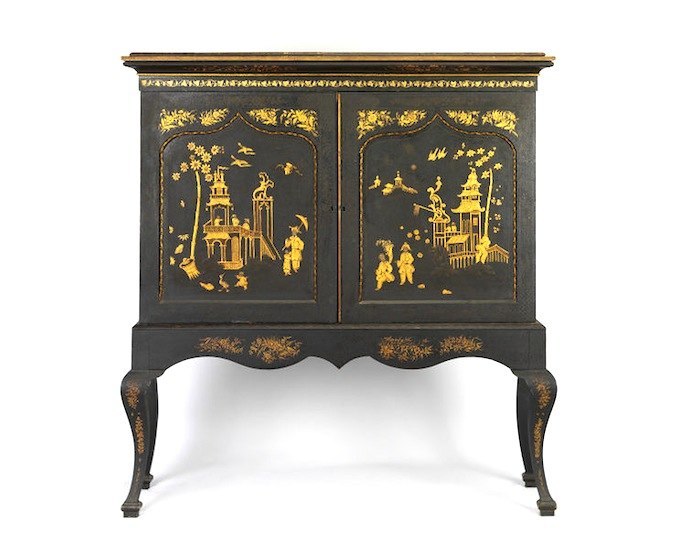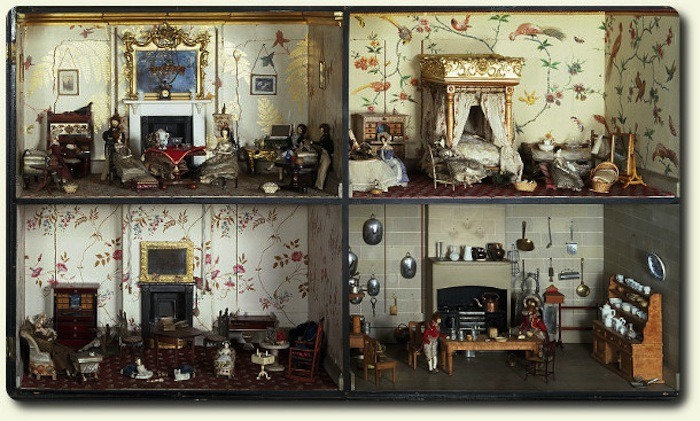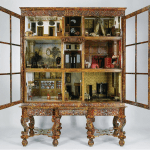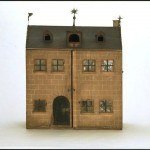Killer Cabinet – A True Story
This gorgeous cabinet dollhouse belonged to John Egerton Killer, of Manchester. He wanted to amuse the many ladies in his family by providing them with a baby house. Cabinet dollhouses were popular in the 1830s, so he ordered a copy of a favorite cabinet in his office. Guess his profession. John Egerton Killer was a surgeon!

The Killer Cabinet, Victoria & Albert Museum, London
Cabinets Of Curiosity
The term cabinet was originally used to describe a room, rather than a piece of furniture. A “Cabinet of Curiosity” could contain collections of unusual items: fossils, scientific studies, oddities gathered from newly discovered lands. These real rooms were often lavishly decorated, the treasures displayed in setting designed for maximum effect upon the guests when the door to the room was opened.
For whatever reason, rooms were downsized-sized to fine works of furniture. A Parisian cabinet-maker, Pierre Golle, had mastered the art of marquetry, inlaying veneers of ebony, rosewood, and fruitwoods with ivory, gilt wood, pewter, and brass. These cabinets were all the rage in Europe and were soon adapted to reproduce life in miniature.
Cleanliness Was The Theme
A black lacquer cabinet decorated in the Chinoiserie style, the doors open to reveal four stylish Regency rooms, also decorated in the Chinese style. But this was not just a pretty piece of furniture. Dr. Killer was a demon about sanitary conditions. He designed his dolls house to be a subtle teaching tool to show the ladies of his household, family, and staff, the importance of cleanliness. It tells the story of the servant’s ongoing struggle for hygiene in the industrial city of Manchester.
Status First
The Killer Cabinet is a late example of English taste in miniatures, where Dutch and German influences could still be seen. But by the mid-19th century, the English would switch their preference from depictions of real life, to miniature buildings on a grand scale that glorified their wealth.
The Killer Cabinet is part of the permanent collection at the Victoria & Albert Museum of Childhood in London.
Unfortunately, the Victoria & Albert Museum links are no longer intact.
Susan Downing, with Patrick Owens
_________________________________________________________________________
I invite you to visit my Etsy Shop where I offer many accessories and pieces of furniture in 1:12 scale.







